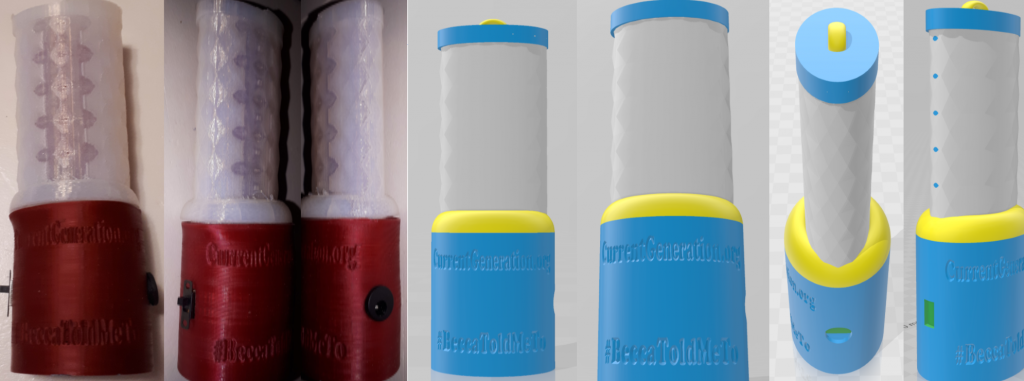Almost exactly one year ago, we delivered some lights to @EducaideSL when we attended the Global Teacher Prize and #GESF in Dubai. The feedback was that the hot glue we were using because of ease of use, softens near the equator and did not hold sufficiently well. Also, we have known for a while that the polycarbonate tubing that we were using for a lens was better than the original thick 3D printed lens, but had the draw back of not diffusing the light and leaving a glare on the page. In an attempt to reduce the number of pieces, to making the parts fit more snugly so that crazy glue could be used and make a diffused light and reduce the overall amount of plastic, we redesigned the lens and the base.
The original lens was 3D printed, but it was thick, blocked too much light and was expensive, that is when our friends from Engineering Brightness Colorado (www.e-b.io) came up with the idea of using polycarbonate tubing. If we could have a thin enough lens that is 3D printed, we could have more flexibility, and diffused light. But all of the thinner walls were weak and structurally unsound. Thankfully, while strolling at the Bosch-Dremel table at ISTE’19 Phili, Ian found multiple 3D printed vases. Bosch ad Dremel were generous to give us the stl files, which we modified for our purposes. This allowed for strength in the wall that were thin enough to let diffused light through, and provide air vents in the sides.
Switching from a cylinder to an oval shape minimizes the plastic and is designed to fit Grace’s Red Circuit nicely with LEDs on both sides of the board to illuminate a whole room.

See Grace’s Circuit for the Gerber files for the circuit board and the stl files for the 3D printer.
